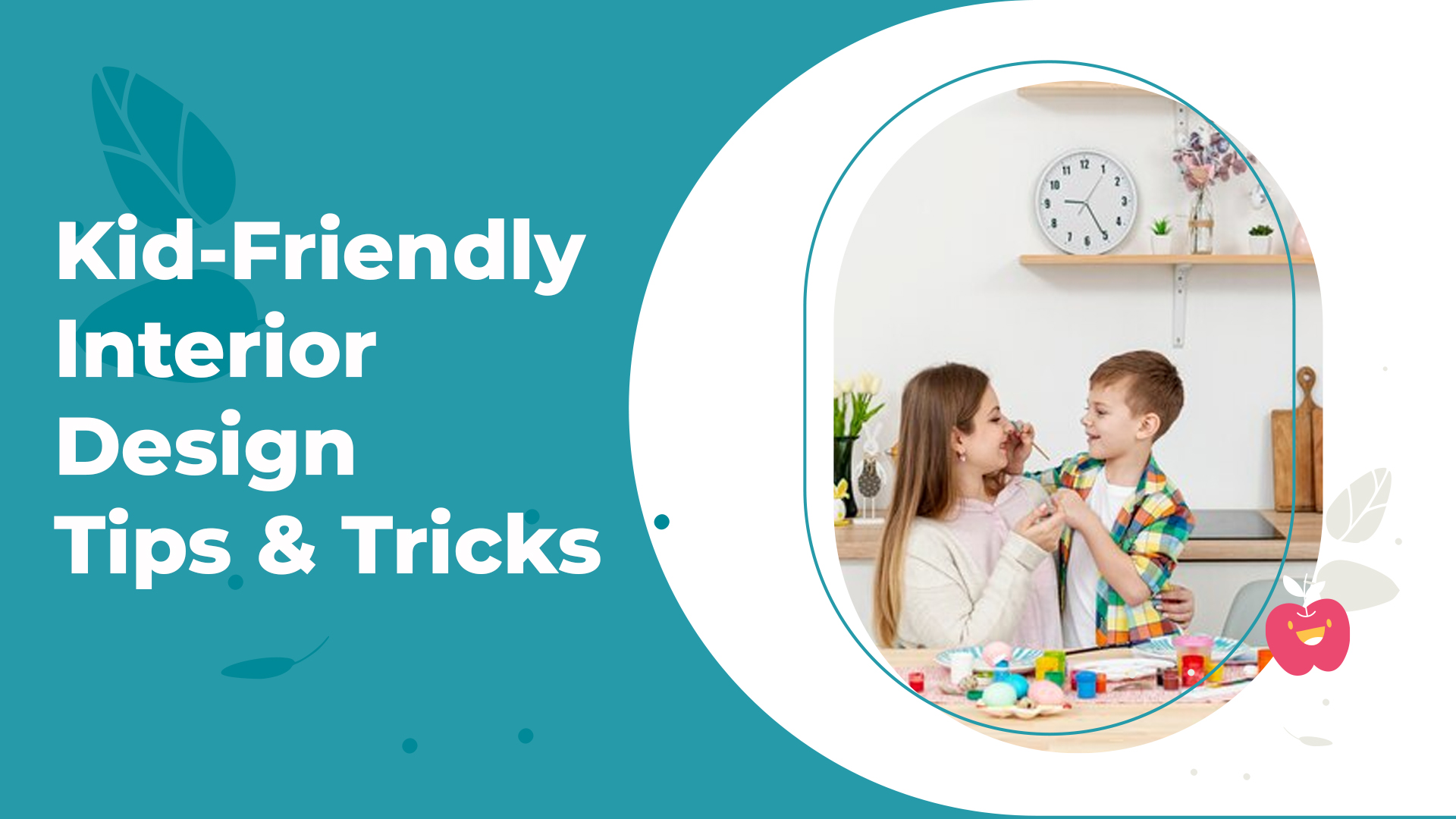Designing a home with children in mind is a delightful challenge that requires a blend of creativity and practicality. Kid-friendly interior design goes beyond just aesthetics; it aims to create spaces that foster growth, creativity, and safety. In this article, we will explore essential tips to make your home not only visually appealing but also conducive to a child's development.
Understanding Kid-Friendly Design
When embarking on a kid-friendly interior design journey, it's crucial to understand the unique needs and preferences of children. Balancing aesthetics with functionality becomes key, ensuring that the space not only looks good but is also practical for daily use and also Fits To Top Interior Design Trends unveiled
Color Palette Selection
Colors play a significant role in shaping a child's mood and behavior. Opt for a vibrant yet soothing color palette that stimulates creativity while providing a calming atmosphere. Consider using color psychology to choose hues that positively impact your child's development.
Furniture Choices For Safety And Comfort
Invest in furniture made from durable and easy-to-clean materials. Avoid sharp edges and opt for rounded designs to prevent accidents. Creating a comfortable and safe environment allows your child to explore and play freely.
Interactive Wall Decor
Make walls an interactive canvas for your child's imagination. Incorporate elements like chalkboard or magnetic walls, allowing them to express their creativity. This not only adds a personal touch but also encourages artistic development.
Storage Solutions For Toys And Clutter
Combat the constant battle against clutter by integrating creative storage solutions. Teach your child organizational skills by providing accessible storage options. This not only keeps the space tidy but also instills valuable habits.
Flooring Considerations
Choose flooring materials that are not only comfortable but also easy to clean. Rugs can add warmth and safety, providing a soft surface for play. Selecting the right flooring contributes to a child-friendly and practical environment.
Adaptable Spaces For Growing Kids
Children grow quickly, and so should their living spaces. Design rooms that can evolve with your child, incorporating furniture and decor that can be easily updated. This ensures a timeless and adaptable design.
Personalization Without Overwhelming
Allow your child to add personal touches to their space without overwhelming the overall design. Strike a balance between customization and maintaining a cohesive look to create a room that reflects their personality.
Safety Measures In Design
Childproofing is essential when designing for kids. Identify potential hazards and take necessary precautions to create a safe environment without compromising on style. Safety gates, secured furniture, and childproofed outlets are crucial considerations.
Incorporating Educational Elements
Use design to stimulate your child's learning journey. Incorporate educational artwork and decor that fosters a love for learning. From alphabet wall decals to educational posters, these elements can seamlessly integrate into the design.
Tech Integration In Moderation
While technology has its place, moderation is key when it comes to a kid's room. Set guidelines for introducing technology and create a balanced environment that encourages both play and learning without excessive screen time.
Budget-Friendly Kid-Friendly Design Tips
Creating a kid-friendly space doesn't have to break the bank. Explore affordable options for furniture and decor, and consider engaging in DIY projects for a personalized touch. Budget-friendly Interior design can be just as stylish and functional.
Inspiration From Real-Life Kid-Friendly Spaces
Draw inspiration from real-life examples of successful kid-friendly designs. Showcase case studies and testimonials, providing practical insights into creating spaces that children genuinely enjoy and thrive in.
Conclusion
In conclusion, kid-friendly interior design is a thoughtful and rewarding endeavor that considers the unique needs of children. By combining creativity with functionality, selecting appropriate colors and furniture, and prioritizing safety, you can create spaces that not only grow with your child but also nurture their development. Remember, a well-designed space contributes to a happy and healthy childhood.
FAQs
How can I create a kid-friendly space without compromising on style?
Balancing aesthetics with functionality is key. Choose stylish yet practical furniture and incorporate playful elements in the decor.
What are some budget-friendly options for kid-friendly design?
Look for affordable furniture, explore DIY projects, and consider repurposing existing items. Creativity can go a long way without breaking the bank.
Is it necessary to childproof every aspect of the room?
While not every aspect needs childproofing, identify potential hazards and prioritize safety in areas where your child spends the most time.
How can I encourage educational development through design?
Integrate educational elements like artwork, posters, and interactive tools to create a stimulating environment that fosters learning.
Should I involve my child in the design process?
Yes, involving your child in the process allows them to feel a sense of ownership and encourages creativity. Consider their preferences and incorporate them where possible.









Leave a reply